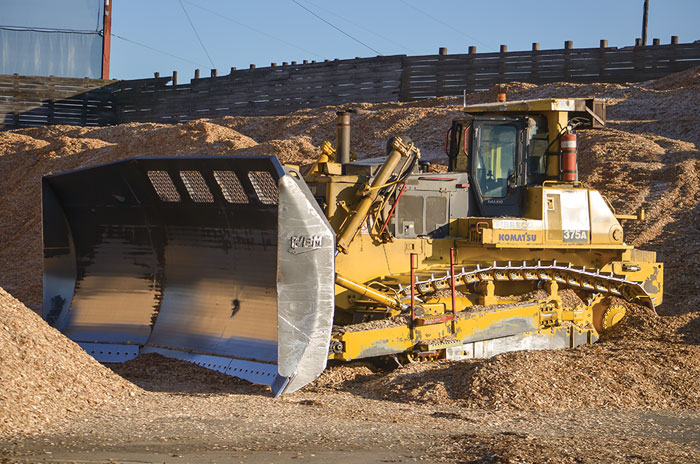The logistics of moving wood pellets from remote locations across Canada to export markets in Europe and Asia have never been easy. Many locations lack the necessary rail structure, road network, or water access to be able to efficiently move pellets overseas.
But with the pellet market driving forward in Canada, transportation companies have begun working together to build better systems for material handling from the plant to the consumer.
“We’ve gotten better as an industry in terms of logistics,” explains Kerry Lige, president of Fibreco. “I think historically each of us in the chain tended to look inward in terms of our little operation.”
Cooperation in the logistics chain has allowed companies like Fibreco to see steady growth in annual exports. In 2012, Fibreco exported 1.6 million tonnes of pellets and 500,000 tonnes of wood chips. Situated in the Port of Vancouver, Fibreco provides overseas shipping for Pinnacle Renewable Energy, Premium Pellets, and Pacific Bioenergy’s wood pellet plants across British Columbia, as well as wood chips from sawmilling operations across the province.
Shipments of pellets from BC producers remain focused on European markets despite the recent announcement of the first shipment from Fibreco to South Korea. “The pellet business is fundamentally European driven,” Lige says. “Specifically the electricity business in the U.K.”
The same cannot be said for Fibreco’s chip exports. Much of the chip volume is sent to the Asian market, with Japan the primary customer.
“In the chip business, our customers are primarily in Japan,” Lige says. “We export the wood chips for the purpose of manufacturing pulp, newsprint. There is some biomass chips that we send over to Japan for some of the electrical companies but that is a small portion of the wood chip business.”

Operations
Pellets and chips arrive at Fibreco by rail car, each of which holds a capacity of 95 tonnes. The company has the capacity to dump approximately 13,000 tonnes per day on average using a specially designed rotational system that flips the wood chip car in order to collect the contents into a storage hold before it is moved to temporary storage.
The chips are stored outside in the open air, while the pellets are moved into storage silos and sheds. The silos and sheds are equipped with dust and smoke suppression systems for fire prevention, and the air inside the shed is exchanged four times an hour to create safe working conditions for the staff.
Once a pellet ship is ready to be loaded, the pellets are pushed inside the shed area using Cat and Komatsu wheel loaders equipped with an air filtration system and a modified WBM blade. Ships are general bulk carriers, loaded with 10,000-50,000 tonnes of chips or pellets depending on the order, with one to two ships loaded per week at the Fibreco dock. For loading the ships, Fibreco uses a straight chute with a shirt to contain the materials, loading at a rate of close to 1,000 tonnes per hour. As for chips, dedicated wood chip carriers up to 35,000 tonnes are loaded at 1,000 tonnes per hour via an articulating spout powered by 2,100 HP of pneumatic air to achieve optimium compaction.
According to Henry Zea, the assistant terminal manager at Fibreco, trimming the hatch is the most difficult part of loading; it’s important to find an effective way to fill the corners of the hold when dumping the materials in the center of the hatch. An inefficient system can significantly slow down loading times, waste manpower, and ultimately lose significant revenue for the company.
Fibreco has experimented with different systems for better material distribution during the loading process and continuously looks for greater efficiency in this area of its operation.
Improving the logistics chain is also a priority for Fibreco, something that has come a long way in recent years. Rather than chastising other parts of the chain, like trucking and rail, they are now working together to create a more efficient process for their customers. Fibreco has had an MOU in place with CN Rail for three years and information is exchanged more freely than in years past.
“We need to support each other as part of the logistics chain,” Lige says. “We find solutions together that we didn’t in the past.”
That cooperation is providing stronger, more efficient, and more cost-effective systems for moving wood pellets and wood chips from BC to customers worldwide.
This is an edited version of an article that appeared in Canadian Biomass magazine.